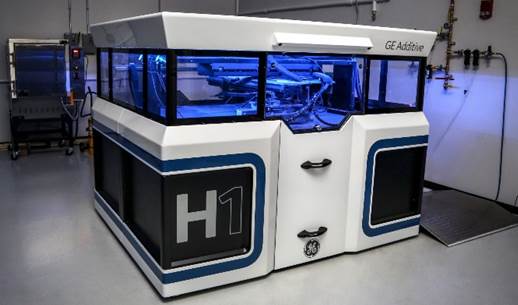
In December, GE Additive were revealing an overview of its new additive machine. Engineers were able to built it in just 47 days. Today the company showcases the potential of this technology through a detailed comparison with its other machines.
The team included engineers from GE Global Research, GE Aviation and GE Additive.

They built and tested 30 different prototypes of a complex, football-size jet engine component. They used a 3D printing technology called binder jet which consists in laying down a special proprietary binder or “glue” to form complex parts on a flat bed of metal powder, one layer after another.
In some ways, the binder jet technology is similar to the company’s laser-powered 3D metal printers, which use beams of light to melt and fuse layers of metal powder. The main differences with 3D metal printers are: the use of a binding agent to make the metal powder stick together, and the possibility to print at least 10 times faster than laser-based methods on the one hand, on the other hand, to produce larger parts.

This process also needs much less energy to print parts, compared with laser metal printers. “Instead of firing high-power lasers over a bed of metal powder, we’re depositing a binder glue like ink on paper,” said Arunkumar Natarajan, a senior scientist at GE Global Research.
Last, metal parts manufactured on the binder jet require more extensive post-processing. The printed metal part initially comes out in a fragile state. It must be cured — essentially baked in an industrial oven to achieve the right shape and make it strong and durable, just like a piece of metal. “We already have successfully printed several complex metal test parts, using this advanced binder jet process,” Natarajan said.
For further information about 3D Printing, follow us on our social networks and subscribe to our newsletter!





